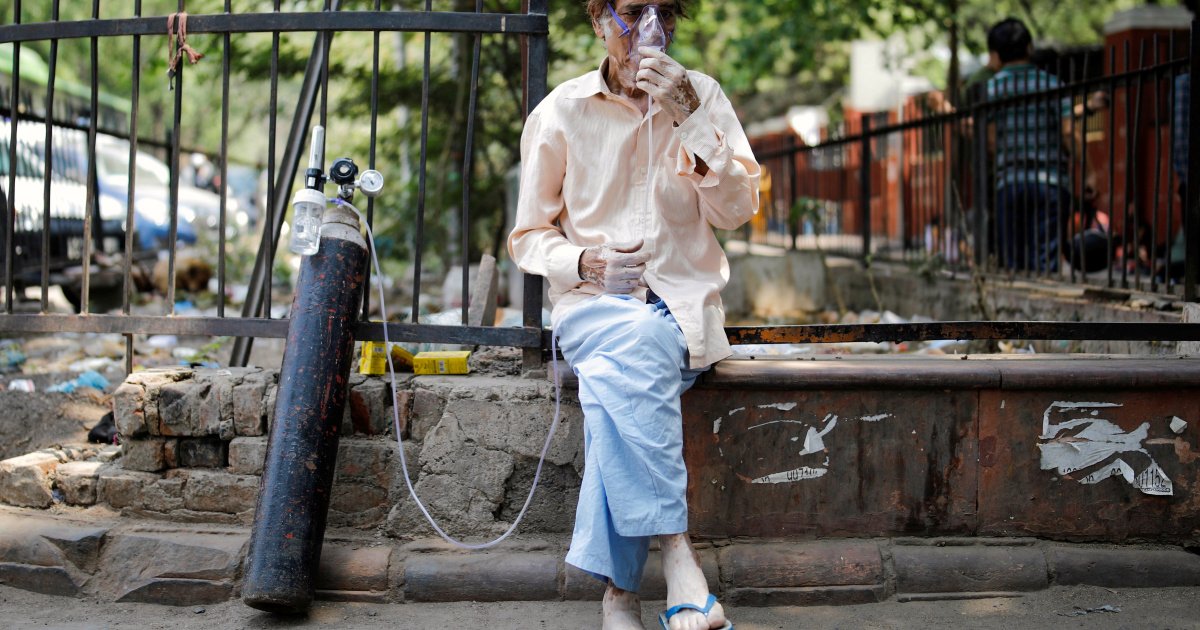This article is part of a series called #IndiainRed run in collaboration with The Gryphon (UoL), The Roar (KCL) and The Strand (KCL).
India is experiencing a major humanitarian and health crisis right now. Each day, it surpasses its own record high death toll. As of the start of this month, 400,000 new Covid cases were recorded in the country in just a span of a day. This happened not just once; India crossed the 400k+ mark thrice in just the first week of the month. According to official claims, there have been more than 3000 deaths each day since 27 April 2021. It has now crossed 4000. These figures, however, are a huge underestimation and the actual numbers seem to be much higher as several news reports from the country suggest.
After the end of the first wave and towards the end of last year, India went back to relative normalcy. During the first wave, in terms of cases, the numbers peaked in September (which was around 98,000) and then steadily declined well past the close of the year. In February and March of this year however, the numbers started to rise back up. But this was not followed by any concrete government action to prevent the spread of infection.
During these months, on the contrary, the messaging from the central government was one of triumph. Harsh Vardhan, the Health Minister of the country, gave out statements claiming the country’s victory over the virus, saying India was “in the endgame” when it came to the pandemic. In fact, the government did not put a stop to the congregation of people for religious Hindu festivals during the past few months, and the Prime Minister himself was basking at political rallies in the presence of huge crowds.
It has now also been brought to light that INSACOG, an expert panel that was appointed by the government to study the variants in December 2020, warned the government (including the Health Ministry) of the risk of the new variant in early March. But, as the stronger variant spread across the country, the central government did not pay heed to the warning. The timing of this cautioning coincides with the time when the government was painting a very different picture of the pandemic to the public, signalling to the gross negligence on their part. So, a combination of a far more infectious variant, a careless government with its misconstruing messaging, and a less vigilant public was what seems to have ultimately led to an explosion of cases at the end of April. The effect continues to ravage the country still.
While the government seems to have failed in its duties miserably, many common people have stepped up to help out each other. As the demand for hospital beds and oxygen cylinders grew with the supply falling short, people started creating databases with lists of places where one could access these resources. Social media feeds are now full of posts of people sharing, requesting and helping each other with supplies and hospital bed availability. Some are even preparing and transporting home-cooked meals to families affected by the virus and isolated at home.
Help has also been arriving from outside the country. According to India’s foreign secretary, 40 countries are helping out India with oxygen and related supplies. But some are questioning if it is being effectively managed. Some state officials have claimed that the incoming aid remained at the airport for around a week before it was sent out. But, the central government has denied there being a delay stating in a press release that they have a “streamlined and systematic mechanism for allocation of the support supplies.”
While most of the political leaders in the country have continued to show major apathy towards people’s sufferings, some going to the extent of denying the presence of an emergency, and even threatening people not to report on oxygen shortages, it is the public that is saving the day by helping each other out.
Donate via Khalsa Aid.
Featured image: Ninian Reid via Flickr.

